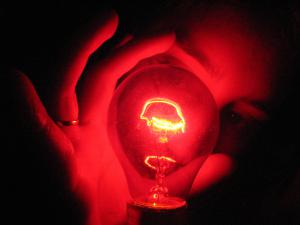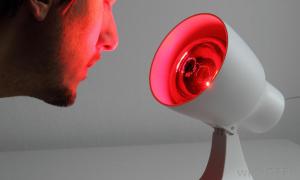The Red Light District…
Is a term I use, when referring to the area surrounding an observatory or any other area where telescopes are in use. This term should in no way be confused with the red lights of bordellos, found throughout the world. Yes both use red lights, but for entirely different purposes.
Legend has it; the term “red light district” comes from the practice of railway brakemen leaving their red lanterns on cat house porches among other places. Since they had to be findable at all times, they’d hang their red lights in the windows where they were.
The Red lights used in astronomy however, have a more functional use, to preserve your night vision. So let me explain how this works.
The back of our eye, called the retina, are packed with two types of photon-detectors: rods and cones. The cones are responsible for our normal daytime vision and detect both color and brightness. The rods are responsible for our night adapted vision and do not detect color, but are very sensitive to the brightness of light; they pass on only shades of gray to our brain. One more thing about rods, it takes about 15-30 minutes for them to work 100% after being exposed to white light, even if it’s only for a fraction of a second. Therefore, when telescopes are in use; please do not use your standard lighting devices or camera flashes.
Ok, we are outside in the dark night sky using our rods, but now we need to refer to our star charts; so how are we going to read our star charts without wreaking our night vision, you got it, a red light. Rods cannot detect red light, but our cones can. By using our red light, we can see around us including our star charts and still preserve our night adapted vision.
As I mentioned in the paragraph above, our rods cannot detect red light, but that doesn’t mean one can use as bright of a light as they wish as long as it is red. Too bright a light can create an afterimage (that bright negative image you often see when you are outside in the bright sunlight and quickly walk into a dark room). This can affect your night vision until it fades. Because of this, always use the dimmest red light possible that you can get away with.
So whether you want people to know where you are like the “brake man” or you just want to preserve your night vision, don’t forget to bring your red light, the next time you enter the Red Light District.
- Author:
- Tom Abbott
- Entry Date:
- Aug 2, 2017
- Published Under:
- Tom Abbott's Columns



